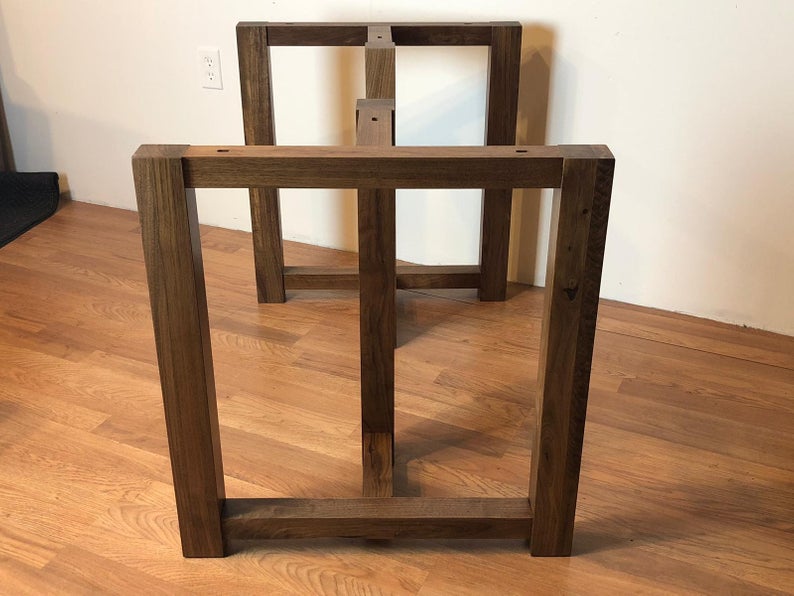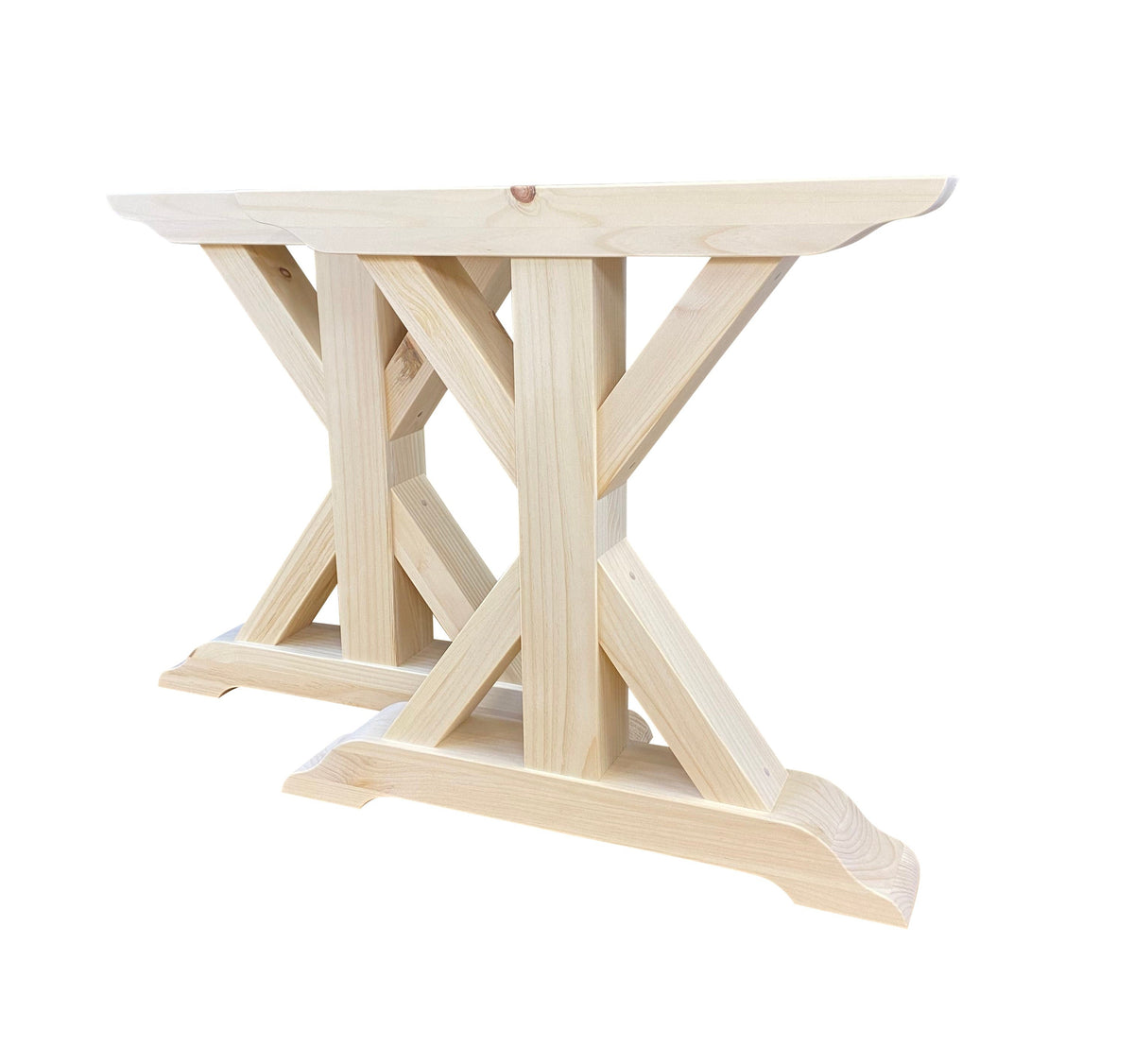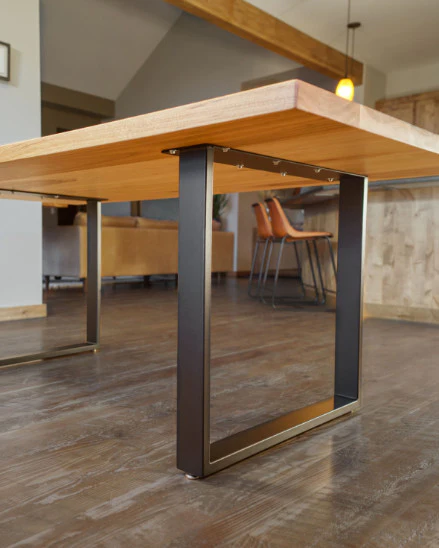Sturdy and Trendy Options for Sturdy Dining Table Legs Wood Solutions
Sturdy and Trendy Options for Sturdy Dining Table Legs Wood Solutions
Blog Article
Discovering the Different Kinds Of Table Legs Wood for Your Eating Space
The choice of eating table legs wood can profoundly impact both the aesthetic and practical qualities of your dining area. Strong timber alternatives, such as oak and walnut, provide a classic appearance with unequaled durability, while engineered timber choices supply innovative layouts that resemble the splendor of all-natural grains.
Strong Timber Options

Moreover, strong wood is renowned for its strength and durability. Unlike crafted materials, solid timber is less prone to warping and damage gradually when effectively kept. This makes it an optimal option for family members or those that regularly organize gatherings. Each item of solid wood is unique, showcasing specific characteristics that include in the charm and character of the dining table.
Furthermore, solid wood can be finished in numerous ways, varying from all-natural oils to stained coatings, enabling house owners to individualize their furnishings to match their design. In summary, choosing strong timber for eating table legs not just makes sure structural honesty however likewise enhances the visual appeal of the eating area, making it a rewarding financial investment for any type of home.
Engineered Wood Alternatives

Plywood, constructed from numerous layers of timber veneer, is steady and especially solid, making it a superb choice for dining table legs. Its split structure permits it to withstand adjustments in humidity and temperature much better than traditional strong wood. MDF, on the other hand, provides a smooth surface area for painting or veneering, enabling developers to achieve a polished look while keeping architectural stability.
Particleboard, typically used in affordable choices, gives good toughness and is lightweight, making it less complicated to deal with. It might not be as sturdy as plywood or MDF. It is vital to take into consideration the desired usage and desired aesthetic when choosing engineered wood options. These products not just boost the functionality of dining rooms but likewise enable for higher design flexibility, ensuring that conventional and contemporary styles can coexist harmoniously.
Reclaimed Wood Features
Reclaimed wood provides a distinct blend of sustainability and personality, making it a significantly preferred selection for eating table legs. Sourced from old barns, manufacturing facilities, and various other frameworks, redeemed wood personifies a background that new materials merely can not reproduce. Each item lugs its own story, marked by distinct blemishes, knots, and differing grain patterns, which add to a table's special aesthetic allure.
In enhancement to its visual charm, redeemed timber is an eco-friendly alternative. By repurposing previously used products, it decreases the demand for new lumber, thus aiding to decrease and conserve woodlands waste. This lines up with a growing customer preference for lasting techniques in furnishings.
Moreover, reclaimed timber is commonly much more durable than freshly harvested timber due to its age. The all-natural drying procedure that reclaimed timber undergoes outcomes in a denser and stronger product, making it much less vulnerable to bending and splitting. This boosts the longevity of dining tables, enabling them to hold up against the rigors of daily usage.
Softwood vs. Hardwood
When choosing dining table legs, comprehending the differences between softwood pop over here and wood is essential for attaining both visual and useful objectives. They generally exhibit an even more rustic appearance, making them appropriate for country-style or casual dining spaces.
On the other hand, hardwoods, sourced from deciduous trees like cherry, maple, and oak, are renowned for their thickness, toughness, and durability. The elaborate grain patterns and rich hues of hardwoods provide a timeless and advanced charm, making them suitable for official dining settings. While hardwoods often tend to be extra pricey and much heavier, their durability against damage often warrants the financial investment.
Ultimately, the option between softwood and hardwood for dining table legs ought to align with your design vision, use requirements, and budget plan, guaranteeing that your dining space mirrors your personal design while continuing to be practical over time.

Finishes and Treatments
The visual allure and durability of dining table legs can be substantially improved with numerous finishes and therapies. Click Here These procedures not just shield the timber from damage but likewise raise its appearance, allowing it to complement diverse indoor designs.
One common treatment is discoloring, which penetrates the timber and enhances its natural grain while including color. Stains supply an abundant, stylish look, allowing property owners to match their furniture with existing style. Conversely, clear finishes such as polyurethane or varnish develop a protective layer without altering the timber's original tone, making certain durability against wear and tear.
Additionally, all-natural oils, like tung or linseed oil, nourish the timber and use a subtle luster, all while being environmentally friendly. These oils allow the surface to breathe, avoiding wetness buildup and prospective warping.
For those looking for a rustic appeal, weathered or troubled surfaces can be put on produce an aged appearance, including personality to the item. Eventually, the choice of treatments and surfaces depends upon personal choice, desired aesthetic appeals, and the certain wood kind, making it important to take into consideration these factors when choosing table legs for your area.
Verdict
In verdict, the selection of dining table leg products significantly affects both the visual and functional facets of an eating space. Solid timbers, crafted alternatives, and reclaimed choices each deal distinct advantages, satisfying different choices and demands. Recognizing the differences in between woods and softwoods, in addition to appropriate surfaces and therapies, permits informed decision-making. Eventually, the check choice of wood type must align with preferred design, durability, and ecological considerations, improving the general eating experience.
The selection of eating table legs wood can exceptionally influence both the practical and aesthetic high qualities of your dining space - Dining Table Legs Wood. Strong wood choices, such as oak and walnut, offer a traditional look with unrivaled toughness, while engineered wood choices use ingenious designs that mimic the splendor of natural grains. Solid timber uses an ageless quality that can boost the general style of an eating area. Each piece of strong timber is distinct, showcasing private qualities that add to the beauty and personality of the eating table
In addition, recovered wood is typically much more durable than recently harvested wood due to its age.
Report this page